Leaderboard
Popular Content
Showing content with the highest reputation on 01/14/21 in all areas
-
Send me your address. When lockdown eases I will at my cost come down and measure the whole lot and do a full rad sizing and heat loss calculation and prove this lot is both undersized and isn’t balanced. It will also prove the point @joe90 has repeatedly made : The system is not designed or installed correctly and is undersized for the heat requirements of the building, and it is not fit for purpose.5 points
-
@zoothorn I said yesterday you didn’t understand rad balancing, and you ignored it. I also went through and explained how we size radiators using BS EN442 and how flow temperature affects heat output, yet apparently because one room gets warm (your workshop) I was wrong. I’ve offered to professionally come and review the house, install and design to see how it is all working and identify any issues, you’ve declined and then gone on to say that you disagree with me even though I have more experience of this. It feels remarkably like you do not want any help with this, but are happier to have something to complain about, rather than take the assistance from many members of this forum to resolve it. I wish you luck resolving this, I have no further comment or input to make on this.4 points
-
Good Luck Mate, You don’t want people to help as you aren’t willing to help measure a radiator, a room, a window , provide a few sketches yet will complain for numerous pages about being cold so I’m not investing any more time.4 points
-
4 points
-
But it would not have been much harder so grind the end off each post and re weld the foot on. But that would have cost money and time. I just loved his "oh that's going to cost too much for a professional to do it, I will do it myself instead" attitude. A bit like we have been doing for most of our build. But the sheer amount of work he did in 18 months puts my rather slow pace of work to shame. And he saw lockdown coming and stocked up on materials before everywhere shut, he read the situation better than me. I can't think of a GD episode that has so inspired me since Ben Law's house in the woods.3 points
-
150 x8 mild steel comes in 6m lengths bends nicely and will rust and blend in have done loads of fancy paths with it as edging. You can use 6mm if no vehicles will wallop it.2 points
-
I’m not disagreeing but that wasn’t the point of my comment, it was who’s liability would pay in the event of an issue and it was outlining both the issues in question. Getting agreement in writing is vital, especially when litigation could occur.2 points
-
You have a point about the lounge area, but open plan kitchen and dining area is a function of the changed role of women in society and how cooking is now a common social activity. No longer are meals prepared in another room out of sight and brought into the dining area, because the chef wants to be part of the hub. I see it as a societal evolution rather than a fad. Certainly has been around a while.2 points
-
My wife wanted Zinc roof - I wasn't so sure , but I love it now. Ours cost £130/m2 roughly but not include the wood buildup underneath. They was there for 3 weeks in total and had 6 guys are one point. I also looked at the steel based solutions (like TATA etc) however if you need some fine details or specific requirements it cannot be done. The great thing about Zinc is that they can pretty much do anything. We really wanted hidden gutters and was key to the over all design so it was what made the decision in the end. Some pics. Ignore the cable on the roof - that's for solar panels to be fitted.2 points
-
Zoot, this thread is the perfect case study of how difficult it is to explain (teach) and learn online. Most of the contributors here have forgotten more than you or I will ever know about radiators and balancing. And I venture to suggest they've never been taught anything about how to teach ab initio members of the public in an online resource. So everyone's groping around trying to help: and you are groping around trying to learn. Both your job, and theirs is incredibly difficult. It might be an idea to spend a little time ( maybe a post ? ) summarising what you think you have learned about radiators and balancing. Write it in simple bullet points as a list. Then those who still want to help might be able to see more clearly what help you need.2 points
-
Yes you don’t see the logic but you keep doubting people here that know far more than you. That should have been part of the designers calculations hence the reason I say, oh never mind, I’m not going to say it again . YES YES!!! Then why do you keep asking the same questions over and over without listening to the replies.2 points
-
hopefully as you bought a means of measuring temperature you can provide the data to help us help you. instead of not answering the questions that people have been posting for 20 odd pages, why dont you post the info on the radiator dimensions, types of radiator, room size, glazing size, type of construction etc, make model of ASHP etc etc.2 points
-
2 points
-
Tonight's episode I found inspiring. A young couple who have both been through their own medical problems, converting a barn on a small budget. Achieved by doing a lot of work themself, a true self build, with a fantastic result.1 point
-
Won't be any of mine then! @zoothorn, this balancing lark is a real thing. People aren't just saying for a laugh. Picked at random but try this: https://www.bestheating.com/info/a-best-heating-guide-how-to-balance-radiators/#:~:text=When you balance radiators%2C you,then your radiators need balancing. As for a temperature measuring device you can pick up a multimeter with temperature probe like in the guide above for about a tenner.1 point
-
1 point
-
1 point
-
1 point
-
1 point
-
1 point
-
I didn’t, for ease I just ended up putting plasterboard up, the options for fire proofing became unclear and expensive, and I was short on time1 point
-
Who is taking responsibility for the decision? Put another way, whose PPI is on the line for getting it wrong?1 point
-
Loved his way of fixing the steel height issue ...!! Concrete saw and jigger pick !!!1 point
-
What's done on my house to warmcell (airtight layer is outside) is 100mm hole saw through plasterboard (before plastering), then cut 200x50mm strips of 6mm or so plywood and push that through the hole so it overlaps. Then drywall screw that plywood so it spans the hole along with one or two screws to hold the original plasterboard disc in place, et voila! Scrim tape over when it comes to plastering. I did hundreds of them...1 point
-
Does this help? We had to replace 90deg bends for slow bends with concrete below for first-floor SVP's, after BRegs visit.1 point
-
Hello gc86. Sounds to me that you are taking a pragmatic approach, keeping the lines of communication clear, not falling out. Althought this may be the immediate concern don't forget to look after the kit on site. Make sure that all the panels are stacked and supported so they don't start to twist. Keep them off the ground with plenty ventilation underneath them. Double sheet the top on battens so the air can get all round the panels... over the top too. Get all nails, brackets hangers etc inside and keep them dry. Doing this may actually help the timber season more so you'll get less shrinkage later on.. every cloud has a silver lining.1 point
-
If it is not fixed the contractor or supplier can just remove it if they are owed money. Once fixed, they can't (legally).1 point
-
Rest bends into angle tees run down the line is the way to do it. Don’t use ordinary bends at the bottom of stacks and don’t use 89° tees1 point
-
If your objective is to reduce running costs then I agree. However a major benefit in my opinion is the constant ventilation it provides. My house certainly isn't air tight, not least because we have wood burners that burn room air. However we love the fresh air and low humidity the system is delivering us. I'd install one even if it was/is costing me money to run.1 point
-
Agree it was a remarkable achievement by a determined and very sweet couple. I hope they have a long and happy life together. I still cannot see why they weren't allowed to demolish and rebuild, using as much of the original materials as possible. Would have made underpinning unnecessary, the build safer and the structure more stable. And saved them a big pot of money. The end result would have looked exactly the same. Some obstacles seem so counter-productive and just plain stupid.1 point
-
Some old taps were designed to improve flow rates on UK gravity fed systems so if you are mains pressure the flow might be too much. If you have a site supply you could jury rig up something to test them. You can fit pressure regulators to cope with this but make sure they are accessible. I've had to adjust all of ours twice in 10 years as the flow rate seems to reduce over time possibly due to scale? Otherwise they work well. A cheat would be to fit isolator valves somewhere in the pipes to make changing washers easier. These could be tweaked shut a bit if the flow was too fast. Cheaper than pressure regulators.1 point
-
Seriously, a number of us are trying to help and at every turn you say we are wrong. Unless you’ve got a floor to ceiling rad in the bathroom then you don’t have rads that are maxed out. Trust me, I’ve fitted some huge rads in my time and you’ve seen nothing ..! Standard boiler run temp is 65-72°C These will be “standard” rads but when you size them you change the flow temps. I’ll give you an example. Using BS EN 442, the industry standard for radiator sizing, a delta 50°C is assumed for calculation. This delta is the difference between the average flow temperature and the desired room temperature. Most plumbers / Heating engineers therefore use a flow temp of 70°C and a target room temperature of 20°C. My “room” example is a 3.5 x 3.5m living room with a standard ceiling of 2.4m. I’ve said it has two 9” solid external walls, and no insulation under the floor. I’ve added a single 1sqm window that is double glazed. The heat requirement of this room is 1540 W based on delta 50°C. To heat this room, I would specify a 1100 x 450 double convector compact radiator. If I now change the delta to delta 35°C, then the room loss is still the same but the rad now needs to be an 1800 x 450 double convector compact radiator. Do you see the difference ..?? The radiator for the lower flow temperature is 63% larger to accommodate the same heat requirement. I can - from your numbers and description - see that your bathroom should have something like an Opus 600 towel rail, which is 600 x 2000..!! If you’ve got anything smaller, it is undersized. It’s not the room, it’s the rads.1 point
-
Welcome to the forum! Sorry to hear about your health issues but hopefully you are getting good treatment and the refurbishment will be a good distraction. Sounds like a good project and I hope that you can get some good advice on here when needed.1 point
-
We also dodged a few on the way to where we’ve ended up. In hindsight they were the wrong plots but it was upsetting and frustrating each time. Hang in there. Something will turn up. In our case, it was an empty bungalow on a road we never knew existed despite having lived less than a mile away and looking for the best part of 8 years. You’ll get something.1 point
-
https://www.greenbuildingstore.co.uk/mvhr-dos-donts-where-to-locate-mvhr-unit/ suggests north is preferable to allow a better summer bypass function.1 point
-
Ah, I had the opposite in my head! But I can't tell you why and have no confidence I'm right. An alternative option would be pretty impractical in my situation though1 point
-
I did. Left Manchester and eventually found a nice derelict property which will eventually god willing be an excellent home. How far from Yarmouth are you Buzz. ZacP Keep your chin up mate. I know it's difficult at times like this. I have been close to four properties before I finally got one. Each one was the development of my dreams and on each occasion that I lost out I was distraught. You'll get there.1 point
-
This is why I say your most important point is to take your time. Orientation to the sun is so fundamental, that it is absolutely the first thing that almost any architect thinks about. F1 point
-
Hi Sally. As Jilly etc allude to it's well worth getting an SE in as early as you can. What you descibe is often called a corbelled brick foundation. You'll often find these. For example up in Glasgow area these can be found in houses / some farm buildings etc predating circa 1930's say. Although the founds may seem shallow (yes they are not deep enough to comply with the modern general guidance for frost cover) they may well be fine. There are a lot of different types of clay, some rock solid that can easily take a bit of extra load, some less so. Also with clays you can sometimes get a "crust". This is where the top layer is stiffer than the underlying clay. Sometimes on new build we can take advantage of this and sit the founds in the crust, the load spreads out as you go deeper thus when you get to say a softer layer of clay the stress on this softer deeper layer is reduced. What this means in practice is that sometimes you are best to leave the soil under the founds undisturbed.. no underpinning etc. As SE will look at the existing structure, see if it has moved about.. or not and may conclude that it is best "left alone". To avoid adding extra load to the outside existing walls you can sometimes transfer some of the extra load arising from the new floor down inside the building to keep it away from the existing walls. This can be easier to control cost wise compared with underpinning etc. Taking a pragmatic approach early can pay dividends. At some point you may well need to pay an SE, so a bit extra spent early on (SE fee) can really be worth while.1 point
-
Hi Deno. That's great you got the planning permission. I have copied a couple of links below to the HSE website that has info for domestic clients. Much of this is underpinned by the statutory CDM regulations. Well worth a read and they have lots of useful info, templates and guidance to get you off on the right foot. You need to have a rake about to find some of the more detailed stuff, but it is there and straight forward too! Once you get a handle on this it can give you confidence as to what level of method statement you may require and so on. They have another section for small building works that can act as a guide too. All the best with the project. https://www.hse.gov.uk/construction/cdm/2015/domestic-clients.htm https://www.hse.gov.uk/construction/areyou/domestic-client.htm1 point
-
we also had a rough journey getting to where we are. our first place we were also gazumped when we were about 1 week away from exchanging. the second place was a long drawn out procedure to get residential access rights over a 3rd party piece of land and the sellers eventually just pulled the plug on the whole thing. It was a real downer, but then only a few months later we found the bungalow I'm currently typing this is and now are just awaiting groundwork quotes before we can begin building our dream home! I know it's cliched but these things seem to happen for a reason as we know we'll be so much happier here than we would've been at the last one that fell through. so, even though you're down about it all at the moment, keep looking and something will come up.1 point
-
I agree. We paid £150k for our 0.25 acre plot without pp in the Cotswolds, in a conservation area, in 2018. We had looked at similar plots with pp for sale at up to £400k (nuts, by the way). It was valued by a surveyor for finance purposes 2 months ago at £260k. The surveyor looks at the end market value of the proposed build and works back from there, ending up with the valuation. For us, its fine as we intend to live in the property and not sell it on. The shortage of plots tends to push up prices, however when buyers look at the total costs of the build (compared with what they could buy a completed build for) they may well end up pulling out of the deal. I think realistic valuations work in our favour, keeping agreed prices down, so do keep trying!1 point
-
Sad to hear how you feel at the moment. But it's only a feeling. And those change over time. Even low levels of involvement in self building means that you look at almost every building in a different way. You can't flush that experience out of your mind. A bit of you will always be a self builder, and I bet you won't stop looking either. Even if you do so in secret, under the bedclothes so she can't see you looking. We waited 35 years.1 point
-
We were outbid twice by developers for the bungalow that we eventually bought and knocked down. The first time it went off the market for several months then came back, the second it was off for a few weeks. I think the sellers were done with developers by the time they sold it to us. That was in 2012 though, so slightly different market. Eventually, something always does. Good luck!1 point
-
You probably ended up alright. Occasionally on here we get somone for whom risk has not worked, and it can be very painful.1 point
-
From our experience, you can get quite emotionally attached to the first few plots and there is the risk of overpaying to 'get the dream'. We dodged a bullet early on - was an old farmhouse with what would have been a plant nursery business at the rear. An odd shaped plot with some issues about access to the front. However we loved its location and were sad when we could not make it work financially but it took experienced friends with cooler heads to get us to walk away.1 point
-
@A_L is right, extensions have a higher allowable U value so your BCO has made a mistake there... either way you want it as low as possible, take a look at xtratherm cavitytherm, it’s full fill cavity insulation which should get you around or just below the 0.2U mark with that build-up1 point
-
1 point
-
A few thousand? What are you planning? An estate? A garage? Do some due diligence locally. Read through all the local planning applications, at least those that are in situations close to yours. Network. Done well, it's hard work. Read. All the recent applications for similar developments to yours. Pick four or five local planners: listen / read all you can about them: don't forget their contributions to Planning Committee Meetings Make a shortlist. Talk to them. Get prices Listen. Get references. Attention to detail matters. Most women are better at that than most men. (Yes, I know - couldn't care less). Planning consultants aren't short of work.1 point
-
We are just commencing our second self-build (started onsite last week). In both cases we have used Architects and in both cases have been very happy with the results. We have outlined how in both case we selected and worked with our architect which we hope will assist other people starting out on their self build journey. 1) Start thinking about which architect you are going to use when you start looking for land and not when you have found land. 2) Draw out a requirements list. My approach is to provide a brief / framework for the architect to interpret rather than prescriptively dictating to the last detail. Requirements should be no more than 2 pages. By making the requirements generic, you can apply them to most plots of land. Include in the requirements why you are building as well (develop and sell, house for life etc) 3) Checkout your architects previous designs. There is likely to be a common design pattern and if that is way off what you want then maybe the architect isn't for you. Also go and see a couple of houses - just viewing from the outside can tell you a lot. 4) If you see a plot that is a potential candidate, email architects on your shortlist for feedback. Most architects will provide feedback for free within reason and the reply will help you to decide if the architect is thinking along the same lines as you. Also, meet with your architect before you engage formally to check that they are a person that you can work with. 5) Be completely upfront with the architect about your budget, put it in your requirements list and be very clear what that budget includes and doesn't include. 6) Be completely upfront with your architect about their fees. Fees based on a %age of the build cost are OK as long as the build cost used is your budget for the build at the outset (fixed) rather than the actual build cost (variable). 7) Good architects are in high demand and don't need to advertise so you will need to research (a lot) and do your legwork. Be prepared for the fact that you might need to wait for the architect you want to become available. 8. Check whether the architect has any experience in the build method you want to adopt and the energy standards that you want to achieve. Find out what the build costs have been on recent build projects and how these compared to budgeted costs . 9) Check with the relevant boards that any claimed registrations are correct. 10) Fees may seem expensive, but for the amount of work that goes into a design I have always felt I got good value for money. In the context of the cost of the project it is a small percentage much of which can be quite easily recouped with a little restraint on the fixtures and fittings. 11) If you use an architect local to the build, it is more likely that he will be able to advise on securing good contractors based on experience of previous builds. My architect has more than recouped his fee by drawing up an attractive house that is straightforward to build. Insulation is what we need to get to passivhaus but no more and the size of the house is what we can build to meet our budget (based on his previous build costs) and requirements. Listed below are the requirements we drew up which may assist others going through a similar exercise: Build Budget: £325K (House, Garage) excludes landscaping, external works and professional fees. The Plot There were a large number of objections to the development from residents but planning permission was granted on appeal. Plot width is around 16.7m. Plot length is 44m. Electricity, Water and mains sewerage (but not gas) available at the plot boundary. Functions of the Building Home for ourselves and the dog. Enough room for friends, grown-up children to stay and family get-togethers. Building a house for life as we can’t get what we like on the open market. We love cooking and the outdoors, so it should support that. Combine open plan living combined with a segregated quiet room downstairs Provide a comfortable and healthy interior environment with a stable temperature and no drafts. Design Direction and Requirements Good natural light to rooms is really important with dual aspect windows in as many rooms as possible but not too keen on huge oversized windows that require complex and expensive shading solutions Designed to Passivhaus standards in a cost-effective manner but don’t over-rely on technology that has high cost to install and maintain. Downstairs Open plan kitchen, dining room and seating area Utility room (able to dry clothes in using pulley) Lounge Small Study if possible WC / Washbasin Good Storage – larder cupboard, cloakroom and cupboard for cleaning utensils Somewhere to sort out a muddy dog and muddy boots (A covered porch with a stone floor and bench maybe). Sliding doors or similar out to the garden from the sitting area. Bottom of kitchen window to be level with the kitchen worktop. Back door into the utility room No large step into front or back door WC away from front door if possible Upstairs 3 to 4 double bedrooms. Small study if not room downstairs (or 4th bedroom) Built in wardrobes Cathedral ceiling. Master bedroom should be able to comfortably take a king size be. En-suite in master. Separate shower in bathroom. General Heating / DHW – no mains gas. Solar PV with a diverter? ASHP (noise?) Consideration given to some acoustic insulation between rooms and between downstairs / upstairs. Doesn’t need to be completely soundproof however. LED lighting throughout and up the staircase Point for charging electric car. Ability to use battery storage in the future should it become more cost-effective. No requirement for chimney or wood burning stove. Agnostic about whether the garage is attached or detached, but should have storage for bikes and a little workshop area. Could be modified for easy access upstairs in the future (Straight staircase maybe). Point for charging electric car. Low maintenance exterior for windows and wall facings. House to have a more contemporary feel inside. Outside to tie in with planning / design code. Window frames recessed into the openings. Other Stuff Recess in shower wall for soap etc. Built in bookcases Lots of sockets Sockets in cupboards for charging hoover etc. Room in utility room for dog crate Built in water filter Water softener Lighting on dimmers with switches that gradually turn LED lights on so they don’t blow. Good outdoor lighting (pathways) Outdoor power point / tap Phone point in every room1 point
This leaderboard is set to London/GMT+01:00





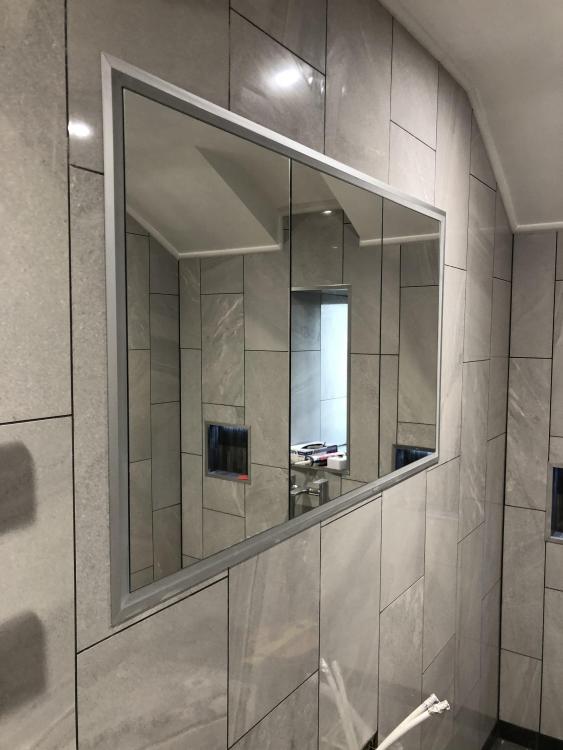


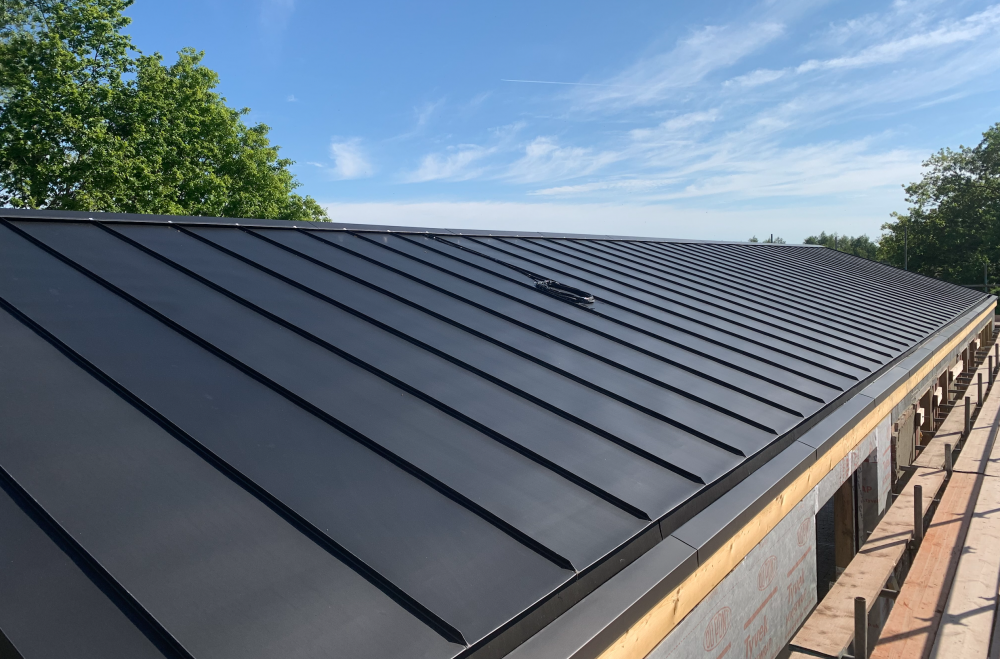
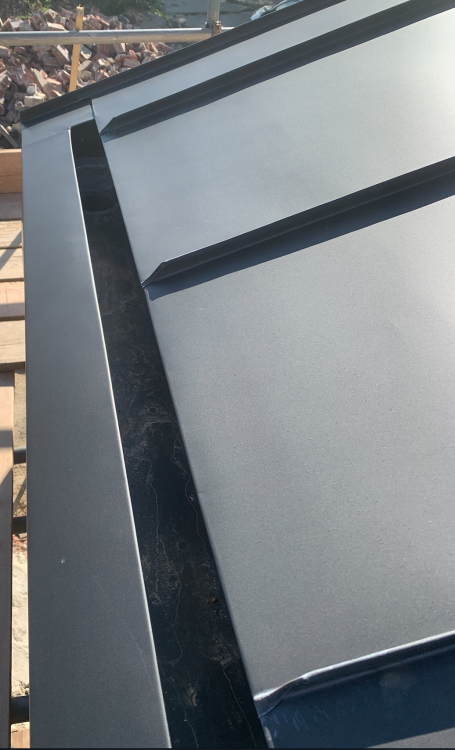


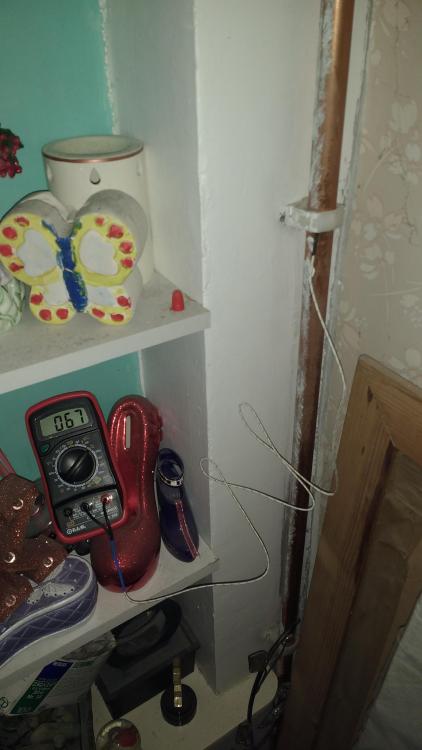
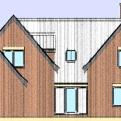


.jpg.c21f3ac78c9b7efd90cbdcb312744dc5.thumb.jpg.7adcad4c0e384f5ecd7d56b0618df6e5.jpg)

